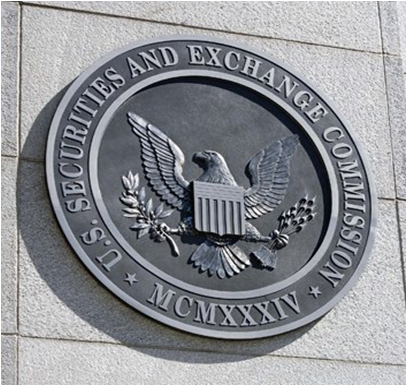 As many of you know there is a heated ongoing debate as to whether the current definition of “accredited investor” should be revised and, if so, how it should be revised. The overwhelming majority of recent articles, and even proposed legislation, surrounding this topic focus solely on advocating for (or against) proposed changes to the definition of “accredited investor” as it relates to individual investors. However, if the primary goal of modifying this fundamental definition is to increase participation, and the available pool of capital, in the private market we absolutely cannot lose sight of the proposed changes concerning entities. Something no one seems to be talking about.
As many of you know there is a heated ongoing debate as to whether the current definition of “accredited investor” should be revised and, if so, how it should be revised. The overwhelming majority of recent articles, and even proposed legislation, surrounding this topic focus solely on advocating for (or against) proposed changes to the definition of “accredited investor” as it relates to individual investors. However, if the primary goal of modifying this fundamental definition is to increase participation, and the available pool of capital, in the private market we absolutely cannot lose sight of the proposed changes concerning entities. Something no one seems to be talking about.
In recent years, as the debate has continued to heat up, there have been countless articles written in support of the expansion of the “accredited investor” definition solely as it relates to individual investors. The same goes for the majority of recent proposed legislation on the topic such as the ‘‘Fair Investment Opportunities for Professional Experts Act” bill (H.R. 2187). On the other hand, you would be hard pressed to find even a handful of recent articles arguing for the expansion of the definition as it relates to currently excluded entities (at least not since 2007, which I will talk about later). Maybe proposed changes relating to individual investors makes for more interesting posts or more widely accepted proposed legislative actions. Perhaps instead people simply believe that entities can fend for themselves. Whatever the reason, the bias toward focusing on individual investors certainly exists. I am not immune to it either as the majority of my blog posts on the subject have been similarly biased. However, I believe it would be a monumental mistake to continue to overlook the proposed changes concerning entities.
In January of this year, the SEC’s Staff released a detailed and comprehensive report analyzing the current “accredited investor” definition. The Staff’s report, which was 118 pages long, also contained 11 pages of recommendations for the SEC to consider in revising the current definition. Of those proposed recommendations, I believe the often overlooked recommendation 1(E) has the greatest potential to dramatically change the private capital market as we know it. Recommendation 1(E), on page 92 of the Staff report, effectively proposes revising the current definition as it applies to entities (particularly, Rule 501 (17 C.F.R. 230.501)(1), (3) and (7)) in two ways. The first is to replace the current $5 million ASSET test with a $5 million INVESTMENT (as defined in Rule 2a51-1(b)) test to provide a more bright line qualifier. This may be useful, but what is of utmost  importance is the second part of the recommendation; that the definition be revised to include ALL entities who meet the $5 million test, not just those specific current enumerated types of entities.
importance is the second part of the recommendation; that the definition be revised to include ALL entities who meet the $5 million test, not just those specific current enumerated types of entities.
Why is this important you may ask. It is important because several types of entities, including many with VERY deep pockets, are currently excluded under the existing definition. Such entities include (as noted in pages 79-83 of the Staff’s report), among others, Indian tribes, labor unions, sovereign wealth funds, 529 Educational Savings Plans, and governmental/quasi-governmental bodies. This means that the Trillions (yes, with a “T”), maybe tens of Trillions, of investable dollars held by these entities are currently excluded from flowing into the private market. If you are looking for untouched pools of capital, welcome to Shangri La!! Now I already know what you are thinking. “How do we know those entities would even invest in private companies if given the opportunity?” Good question. The answer is there are several demonstrable indicators that these entities want to invest in private companies but have, to date, been excluded from doing so.
Take for example, Indian tribes. Over the years multiple advocates have petitioned for including Indian tribes as “accredited investors” in order to foster much needed, and desired, private equity investment within the Indian community (see footnote #288 to the Staff’s report for reference to multiple supporting letters). For one of the best analysis of the issue to date I direct your attention to a well cited working paper from 2008 by Gavin Clarkson, Associate Professor of the Department of Finance at New Mexico State University, entitled “Accredited Indians: Increasing The Flow, Of Private Equity Into Indian Country, As A Domestic Emerging Market” which outlines, in detail, the need and desire for private equity investment in the Indian community to help decrease the existing funding gap. As the article notes:
Tribes not diversifying into higher earning investment portfolios are falling behind other investors and individuals on a relative basis. For those tribes with sufficiently large assets, prudent portfolio diversification would include privately-placed investments as a component of overall tribal investment strategy. A few wealthy tribes have tens or hundreds of millions of dollars to invest and should be able to put a reasonable allocation into these higher-earning investments that require accredited investor status, just as other wealthy and institutional investors do.
As further evidence of the need for private investment in the Indian community, there has been a significant rise in the number of American Indian-sponsored venture capital and private equity firms over the last few years that seek specifically to raise funds from prosperous Indian tribes in order to reinvest in businesses within the Indian community. However, as Indian tribes currently do not qualify as “accredited investors,” such firms have been significantly inhibited in terms of both obtaining capital investment from, and reinvestment back into, Indian tribes.

Governmental and quasi-governmental bodies are in a similar position. Many such bodies specifically set aside certain funds specifically to invest in local small business/private companies. This money typically flows to such companies in the form of grants, tax credits, etc. rather than by direct investment so nothing goes back to the legislative body in terms of returns (which could then be reinvested, etc.). There are some indirect actual investments being made in private companies by Governmental and quasi-governmental bodies (e.g. by creating funds which push money to local investment funds who then invest in private companies, such as the Illinois Growth and Innovation Fund), but the vast majority of governmental capital given to local small business/private companies does not elicit any direct return for the governmental body. While some of the arguments against direct investment in private companies centers around political/reputational concerns, the mere fact that most governmental and quasi-governmental bodies do not qualify as “accredited investors” makes any direct investment extremely difficult and cost prohibitive.
Finally, we have Labor unions. Labor unions represent one of the bigger, if not the biggest, potential source of private investment capital. Moreover, in today’s economy, they are constantly looking for new, more aggressive, sources of investment. Labor unions are non-profit organizations which rake in hundreds of millions of dollars a year tax-free in member dues. The dues are to be re-invested by the union for the sole purpose of enhancing and protecting the benefits of retiring union members (not that this is what always happens but that is a topic for another post). In the past this directive has been construed as license for union investment advisers to focus on more conservative, safe and steady, types of investment strategies. However, with the recent economic downturn many labor union funds took big hits and they are now looking for more aggressive, growth types, of investment strategies. With deep pockets, an aggressive investment strategy, and statutory prohibitions about investing too much of their portfolio in any one asset class, it would seem like a natural fit for labor unions to invest in potentially high yielding alternative investments, such as venture capital, private equity, hedge funds, and private REITs. However, participation in these investments are typically restricted only to “accredited investors” so labor unions are most often excluded from participating and have to seek other asset classes.
Now I bet you’re thinking, “it only makes sense to include these entities in the definition of “accredited investor” so the SEC is obviously going to make the recommended change.” Well you would be half right. There is no legitimate reason, at least not one that I could find in my research, to exclude certain entities from qualifying as “accredited investors.” Particularly those larger entity types discussed above. However, just because it makes sense in no way means that the SEC will, or is even likely to, adopt the proposed revision.
What you may not know is that the Staff report discussed above is not the first time that the recommendation to include these entities was made. A very similar recommendation was made way back in 2007 (see Revisions of Limited Offering Exemptions in Regulation D, Release No. 33-8828; Aug. 3, 2007). When the recommendation was first made back in 2007 it got a lot of attention and support (see footnote #288 to the Staff’s report for reference to multiple supporting letters). Even the North American Securities Administrators Association, Inc. (NASAA) supported the proposed change as shown in its letter dated October 26, 2007 (so long as the qualifying amount of assets/investments was increased to $10 million). Ultimately however, the proposed revision was never adopted, even in light of such significant support.
In 2007 the entity issue was well publicized and the proposed revisions were heavily advocated for and supported. Today however, this issue has clearly taken a back seat to the proposed revisions concerning individual investor. If you don’t believe me, Google “Accredited Investor” and “Indian Tribe” and see how many articles you find that are dated after 2007/2008. This is a serious oversight if you ask me as we are talking a about an absolutely monumental amount of potential capital that is being excluded from the private market for no good reason. Just look at the more prosperous Indian tribes who,  collectively, totaled $28.5 billion in revenues from the gaming industry in 2014 alone. Not to mention the Labor Unions who hold a significant percentage of the estimated $3.3 trillion in assets held/$1.7 trillion in annual revenues generated by U.S. nonprofit entities. This is some serious, economy moving, money.
collectively, totaled $28.5 billion in revenues from the gaming industry in 2014 alone. Not to mention the Labor Unions who hold a significant percentage of the estimated $3.3 trillion in assets held/$1.7 trillion in annual revenues generated by U.S. nonprofit entities. This is some serious, economy moving, money.
I am all for opening capital markets to more individual investors but if we really want to move the dial of investment in the private market we absolutely need to open the market up to the larger, deep pocketed, entity classes which to date have been excluded from participation. To do that we absolutely need to keep this issue on the front burner and start doing more to advocate for the passing of the proposed revisions. If it did not pass in 2007, when there were actually people talking about this issue, it is almost certain to get passed over again if we do not act.

Pingback: All the News | smallchange
Pingback: All the News from 2016 | smallchange